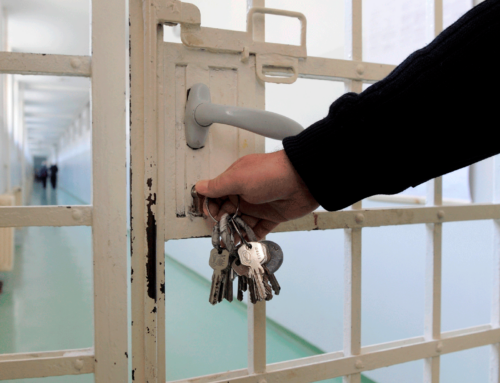
Guest writer: Seppo Hujanen, Security Manager, Essote
In the South Savo Wellbeing Area, the Secapp application is widely used. In our organization, it is used to fill shifts and call staff to work, communication during disruptions, and provides much-needed safety in home care services within the health and social care sector. In addition to safety for those working alone, Secapp is also used for transmitting emergency phone alerts to staff who are on call for urgent homecare visits.
Our goal has been to manage as many tasks as possible with a single application, and this has been achieved with Secapp. This simplifies staff’s work, and people also become more familiar with the application’s features and usage when the same application is widely used.
In our wellbeing area, Essote, Secapp is mainly used for calling staff to fill shifts. A large group can receive mass messages via Secapp or text messages about available work shifts. After that, filling the shift happens automatically – the first one to respond to the message gets the shift, and automation notifies the other contacts about the filled shift.
Another important use of Secapp in Essote is communication during disruptions. With the help of Secapp’s message templates, disruptions can be quickly reported, and key personnel or management can be alerted. Secapp has been used in these functions for a long time.
Secapp’s use expanded to bring safety to home care services as well
A few years ago, we expanded Secapp’s use by adopting lone working safety solutions. In our organization, alarm devices had previously been acquired for the safety of staff in home care services. However, they lacked the ability to locate the person raising the alarm. If a person made an alarm, the emergency center might know who had the alarm with them, but not where the person was at that moment.
Partly for this reason, people who worked in home care, social work tasks, and other home care services did not carry the alarms with them.
Since Secapp was already being used for work calls, it was natural to expand its use within the same system for safeguarding those working alone. The advantage was that workers did not need separate training for different systems.
In early 2020, I heard that Secapp was bringing a personal safety feature and an integrated physical button to the Secapp system we were already using. This would work with GPS/Bluetooth location, allowing the person raising the alarm to be located fairly accurately.
Since Secapp was already being used for work calls, it was natural to expand its use within the same system for safeguarding those working alone. The advantage was that workers did not need separate training for different systems.
When product development had progressed further, we agreed with Secapp on launching a pilot for a small number of staff. The pilot ensured that the alarm could be raised with the buttons on Secapp phone application or with a separate alarm button device. After the pilot phase, we first introduced the solution for home care, and then for healthcare and social services for people making home visits.
Alarms are directed to a control center, where staff is on duty at all times. They were also actively involved in implementing the service and training staff in using the application.
Safety for those working alone leads to better well-being at work
We have found Secapp’s safety feature for lone workers to be easier than our previous solution. Our previous system required the person to report where they were or would be. Location is a significant advantage of Secapp’s feature for lone workers. They do not need to remember to report their location in advance. And if something were to happen during an outpatient call, the person’s location is immediately known.
From a safety standpoint, it is crucial that when an alarm arrives, the recipient immediately sees where help is needed. In addition to Secapp, all employees also have the 112 app on their work phones, which connects to the emergency center.
Some of our employees use physical Bluetooth buttons, while others only use buttons within the phone application. Our goal is for the physical alert buttons to be more widely adopted, as it allows for easily and discreetly calling for help.
Fortunately, help has rarely been needed, with only a few alarms being triggered due to threatening situations. The application feature that triggers an alarm if the phone is immobile for a certain time provides safety for lone workers. Of course, no alarm system can eliminate the possibility of violent situations, but it raises awareness that help is available if needed.
The most significant impact of the lone worker safety system is the feeling of security it provides, which should not be underestimated. Knowing that help is just a button press away also has a significant impact on employee well-being.
Secapp, as a company, has also continuously strived to develop these features and thus promote employee safety.
There is a shortage of staff, so everything we can do with system-related solutions for job satisfaction must be done to provide healthcare professionals with the best and safest work environment possible.
The same system can handle many tasks
Overall, we have been satisfied with the fact that a single system can handle multiple tasks, making it easier for staff since they don’t need to learn how to use multiple systems. The more familiar the application’s use becomes in everyday life, the easier it is to use, whether in an emergency or for daily routine tasks.
In addition to personal security, with Secapp we can efficiently reach the entire staff when needed, currently, around 2,000 people in Essote, whether it’s for shift filling or crisis communication. It’s also essential that Secapp is secure and operational during disruptions.
In our organization, we have used Secapp’s mass messages in situations where there have been, for example, data traffic or phone disruptions. A good feature of Secapp messages is that the message must be answered (OK or NOK), which gives the sender certainty that the message has been received and reacted to.
I can sincerely recommend Secapp if an organization needs to ensure the safety of employees working alone, such as those making home visits, or generally for anyone who needs to quickly reach large numbers of people.
As financial resources are limited, it is increasingly important that the systems in use serve users comprehensively and cost-effectively. Secapp offers versatile possibilities for expanding use. As we transition to the new well-being area model ofoperations, discussions about expanding Secapp to even more functions will undoubtedly take place.
Regardless of the system, familiarizing users with it is essential, making the application easy to start using right away. Secapp has clearly also invested in training and user orientation. Help is always available if any usage-related problems arise. Our admin user has also been active and has helped others in using Secapp. The user feedback I have heard has been solely positive.
I can sincerely recommend Secapp if an organization needs to ensure the safety of employees working alone, such as those making home visits, or generally for anyone who needs to quickly reach large numbers of people.

Guest writer: Seppo Hujanen, Security Manager, Essote
In the South Savo Wellbeing Area, the Secapp application is widely used. In our organization, it is used to fill shifts and call staff to work, communication during disruptions, and provides much-needed safety in home care services within the health and social care sector. In addition to safety for those working alone, Secapp is also used for transmitting emergency phone alerts to staff who are on call for urgent homecare visits.
Our goal has been to manage as many tasks as possible with a single application, and this has been achieved with Secapp. This simplifies staff’s work, and people also become more familiar with the application’s features and usage when the same application is widely used.
In our wellbeing area, Essote, Secapp is mainly used for calling staff to fill shifts. A large group can receive mass messages via Secapp or text messages about available work shifts. After that, filling the shift happens automatically – the first one to respond to the message gets the shift, and automation notifies the other contacts about the filled shift.
Another important use of Secapp in Essote is communication during disruptions. With the help of Secapp’s message templates, disruptions can be quickly reported, and key personnel or management can be alerted. Secapp has been used in these functions for a long time.
Secapp’s use expanded to bring safety to home care services as well
A few years ago, we expanded Secapp’s use by adopting lone working safety solutions. In our organization, alarm devices had previously been acquired for the safety of staff in home care services. However, they lacked the ability to locate the person raising the alarm. If a person made an alarm, the emergency center might know who had the alarm with them, but not where the person was at that moment.
Partly for this reason, people who worked in home care, social work tasks, and other home care services did not carry the alarms with them.
Since Secapp was already being used for work calls, it was natural to expand its use within the same system for safeguarding those working alone. The advantage was that workers did not need separate training for different systems.
In early 2020, I heard that Secapp was bringing a personal safety feature and an integrated physical button to the Secapp system we were already using. This would work with GPS/Bluetooth location, allowing the person raising the alarm to be located fairly accurately.
Since Secapp was already being used for work calls, it was natural to expand its use within the same system for safeguarding those working alone. The advantage was that workers did not need separate training for different systems.
When product development had progressed further, we agreed with Secapp on launching a pilot for a small number of staff. The pilot ensured that the alarm could be raised with the buttons on Secapp phone application or with a separate alarm button device. After the pilot phase, we first introduced the solution for home care, and then for healthcare and social services for people making home visits.
Alarms are directed to a control center, where staff is on duty at all times. They were also actively involved in implementing the service and training staff in using the application.
Safety for those working alone leads to better well-being at work
We have found Secapp’s safety feature for lone workers to be easier than our previous solution. Our previous system required the person to report where they were or would be. Location is a significant advantage of Secapp’s feature for lone workers. They do not need to remember to report their location in advance. And if something were to happen during an outpatient call, the person’s location is immediately known.
From a safety standpoint, it is crucial that when an alarm arrives, the recipient immediately sees where help is needed. In addition to Secapp, all employees also have the 112 app on their work phones, which connects to the emergency center.
Some of our employees use physical Bluetooth buttons, while others only use buttons within the phone application. Our goal is for the physical alert buttons to be more widely adopted, as it allows for easily and discreetly calling for help.
Fortunately, help has rarely been needed, with only a few alarms being triggered due to threatening situations. The application feature that triggers an alarm if the phone is immobile for a certain time provides safety for lone workers. Of course, no alarm system can eliminate the possibility of violent situations, but it raises awareness that help is available if needed.
The most significant impact of the lone worker safety system is the feeling of security it provides, which should not be underestimated. Knowing that help is just a button press away also has a significant impact on employee well-being.
Secapp, as a company, has also continuously strived to develop these features and thus promote employee safety.
There is a shortage of staff, so everything we can do with system-related solutions for job satisfaction must be done to provide healthcare professionals with the best and safest work environment possible.
The same system can handle many tasks
Overall, we have been satisfied with the fact that a single system can handle multiple tasks, making it easier for staff since they don’t need to learn how to use multiple systems. The more familiar the application’s use becomes in everyday life, the easier it is to use, whether in an emergency or for daily routine tasks.
In addition to personal security, with Secapp we can efficiently reach the entire staff when needed, currently, around 2,000 people in Essote, whether it’s for shift filling or crisis communication. It’s also essential that Secapp is secure and operational during disruptions.
In our organization, we have used Secapp’s mass messages in situations where there have been, for example, data traffic or phone disruptions. A good feature of Secapp messages is that the message must be answered (OK or NOK), which gives the sender certainty that the message has been received and reacted to.
I can sincerely recommend Secapp if an organization needs to ensure the safety of employees working alone, such as those making home visits, or generally for anyone who needs to quickly reach large numbers of people.
As financial resources are limited, it is increasingly important that the systems in use serve users comprehensively and cost-effectively. Secapp offers versatile possibilities for expanding use. As we transition to the new well-being area model ofoperations, discussions about expanding Secapp to even more functions will undoubtedly take place.
Regardless of the system, familiarizing users with it is essential, making the application easy to start using right away. Secapp has clearly also invested in training and user orientation. Help is always available if any usage-related problems arise. Our admin user has also been active and has helped others in using Secapp. The user feedback I have heard has been solely positive.
I can sincerely recommend Secapp if an organization needs to ensure the safety of employees working alone, such as those making home visits, or generally for anyone who needs to quickly reach large numbers of people.






